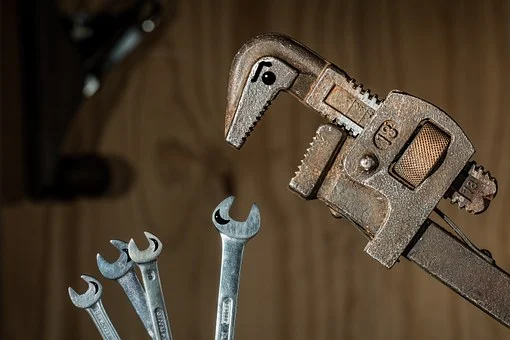
Table of Contents
If you’ve been shopping for a new spanner set, you might have come across some wrench sets instead. You’re probably wondering if there’s any difference between the two sets—and you might be a little confused since spanners and wrenches look very similar!
By reading this article, you’ll discover the difference between spanners and wrenches and understand why people often use the term interchangeably.
Regional differences
The main difference between spanners and wrenches is regional.
In the United Kingdom and Australia, spanners are popular hand tools intended for removing or fitting fastenings by turning nuts or bolts. Wrenches are similar tools, but they’re intended for turning non-fastening components, like pipes.
Now, let’s talk about the United States definition. In the USA, people typically use wrenches to describe spanner-like tools with an adjustable size. They’re also called monkey wrenches or adjustable spanners.
But why do these regional differences exist?
It’s probably because of how the two words originated. Spanner most likely comes from the old 18th-century German spanner, which means ‘to twist. Wrench, on the other hand, probably comes from the 10th-century Old English word wren can, which means ‘twist’.
The world wrench, then, has much earlier beginnings than a spanner. Spanner only entered common usage after English speakers migrated to the United States, which could indicate why the older world wrench holds strong in the country.
Let’s focus on the Australian usage
In Australia, we generally use the word spanner to refer to all kinds of tools used for twisting and tightening. There are some exceptions like the pipe wrench plumbers often use to rotate pipes.
Australian spanners are usually open-ended or ring spanners, although other shapes are available.
Now, let’s discuss some common spanner types you’ll find on the Australian market.
Common spanner types
Here’s a quick list of the spanner types you might find in typical spanner sets.
Open-ended spanner
The open-ended spanner features a U-shaped jaw that opens to the width of the bolt head or nut. They also have two flat sides designed to grip opposing ends of a fastener, helping the user tighten or loosen it.
Ring spanner
Ring spanners are a simple spanner type featuring a profile enclosed within a ring. Typically, the head of a ring spanner is offset from its handle, making it easier for the user to reach the fastener.
Combination spanner
The combination spanner is another simple type of spanner. These tools comprise two spanner heads and a shaft, with one head being open-ended and the other being a ring head. Each head normally sits at a 15-degree angle to the tool’s shaft, allowing easier nut and bolt access.
Ratchet spanner
Ratchet spanners make use of a unique ratchet system that prevents the user from turning the fastener in a particular direction. In this way, the user can twist the spanner back and forth to tighten a nut or bolt rather than continually removing and replacing it.
Conclusion
So, here’s a quick summary of the differences between spanners and wrenches. The difference between the two tools is mostly regional, with Australian and UK residents preferring the word spanner, and North American residents preferring the word wrench.
Spanners (in the UK and Australia) normally come in the ring or open-ended shapes, while North American wrenches normally come in box-end or open-end shapes.
















